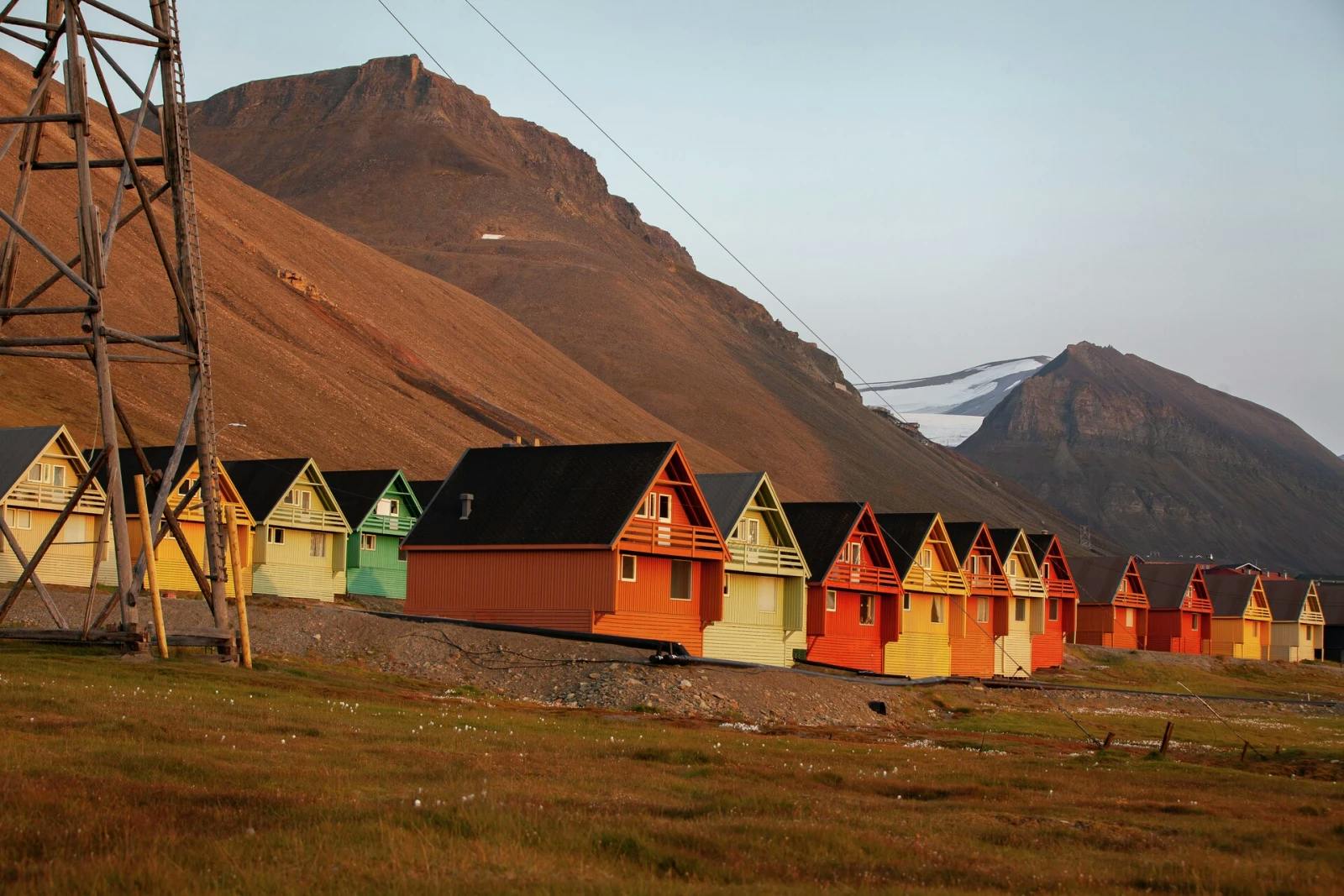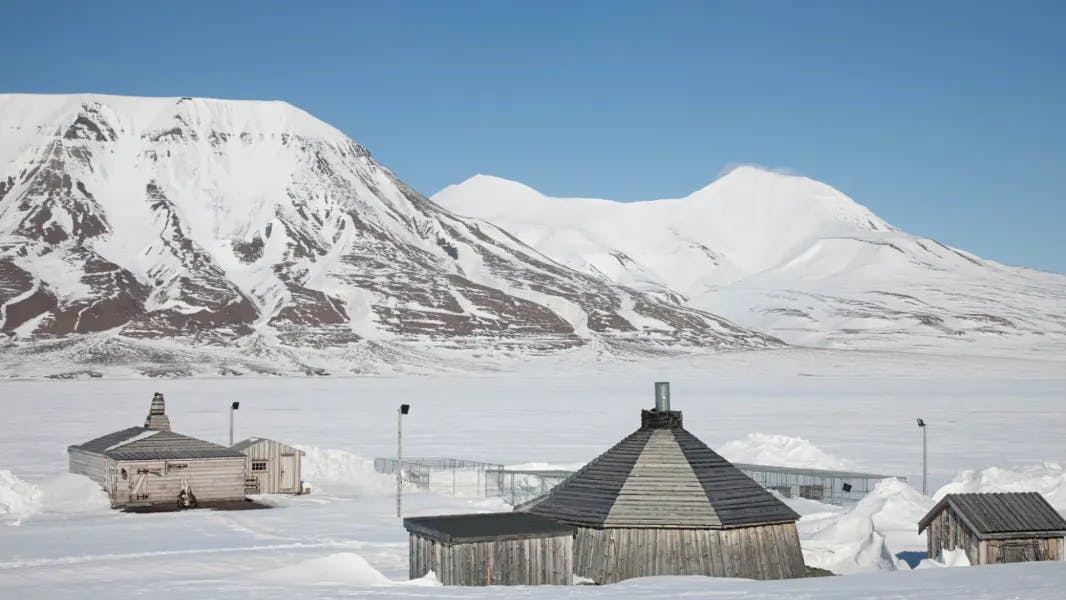About Svalbard and Longyearbyen
Svalbard is a Norwegian archipelago in the Arctic Ocean. Located on top of the world, it contains endless areas of unspoilt, raw Arctic wilderness. Svalbard consists of all the islands, islets and skerries between 74° and 81° north latitude and 10° and 35° east longitude. The largest island is Spitsbergen, while the highest mountain is Newtontoppen (1,713 m above sea level).
The History of Svalbard
"Svalbardi" - meaning “the land with the cold shores” - first appeared in Icelandic chronicles as Svalbarði fundinn in 1194, hinting at an ancient voyage to an icy realm. Yet history remains silent on whether it truly referred to the Svalbard we know today or some other frigid, far-off land.
The archipelago's first confirmed encounter came centuries later, in 1596, when Dutch explorer Willem Barentsz braved uncharted Arctic waters to reach these shores. Stunned by the dramatic, jagged peaks rising from the sea, he named the largest island Spitsbergen - “pointed mountains” - a fitting tribute to the wild, untouched beauty of this polar wilderness.
Longyearbyen & its inhabitants
Svalbard may seem like the edge of the world, but it’s home to a vibrant and international community of around 2,650 people. Most live in Longyearbyen, the archipelago’s bustling administrative hub, nestled among Arctic mountains and glaciers. Here, over 2,100 residents from more than 50 nations coexist - Norwegians form the majority, but sizable communities from Thailand, Sweden, and Russia bring global flavor to this icy frontier.
Beyond Longyearbyen, the Russian mining town of Barentsburg keeps its Soviet-era character alive, while the research outpost of Ny-Ålesund is a hive of scientific discovery and research. A handful of others live in the ghostly remnants of Pyramiden, in the industrial outpost of Svea, and at remote meteorological stations on Bjørnøya and Hopen - the only settlements not on the main island of Spitsbergen.
Life on Svalbard is temporary for most: the average stay is just seven years. Still, a growing number put down deeper roots - by 2016, one in four residents had called Svalbard home for over a decade. The population skews young, with a strong concentration of people aged 25 to 49, and very few over 70. It’s a land of cold nights, midnight suns, and bold, youthful energy - where every face tells a story of adventure.
Life in Longyearbyen: The World's Most Northern Town
Longyearbyen is situated on the shores of the idyllic Adventfjord, flanked by towering mountains and shimmering glaciers—a remote Arctic outpost with breathtaking scenery in every direction. Though the town has just 40 kilometres of roads, it's divided into distinct little neighbourhoods, including the compact town center and Nybyen, or “new town.”
The town centre hums with life: cosy hotels, lively pubs, welcoming restaurants and bars, and quirky shops make it the heart of Longyearbyen’s social scene. Just 2 kilometres outside of the town centre, Nybyen offers a quieter charm. Once miners' barracks were built after World War II, the buildings now house guesthouses, a restaurant, and an art gallery. No matter where you stand in Longyearbyen, you will enjoy sweeping views of Hiorthfjellet, the majestic peak that watches over the town.
Fun Fact's about life in Longyearbyen
During the winter season, there are seperate roads for snowmobiles throughout the town.
We only have one grocery store, Coop, which is open from 10:00 am - 7:00 pm: Mon-Fri, 10:00 am - 6:00 pm: Sat, 3:00 pm - 6:00 pm: Sun.
We are used to living next door to reindeer, and during the winter are often grazing around the town.
We still take off our shoes when we enter hotels and restaurants, a historical tradition that has arisen from the problem with coal dust in the old days.
All the mining infrastructure is protected and remains as surreal monuments in and around the settlement.
The streets in Longyearbyen have numbers instead of names.
Longyearbyen has a university centre with around 300 students, all of whom must learn to use firearms for Polar Bear safety
Seeing whales swimming in the fjord from our lounge window is not an uncommon occurrence.
Climate and Temperatures: From Northern Lights to Midnight Sun
Svalbard’s climate is unmistakably Arctic, yet surprisingly milder than one might expect at this latitude, thanks to warm Atlantic currents and frequent low-pressure systems sweeping in from the sea. On Spitsbergen’s west coast, many of the fjords now remain ice-free for much of the winter, though long-time residents still recall the days when you could walk across frozen seas to reach Pyramiden or Barentsburg on foot.
Temperatures average around -16°C in January and rise to a modest +6°C in July. Longyearbyen doesn’t see much precipitation, but fierce Arctic storms do make occasional appearances, and the weather up here can change very quickly. So it's important you are prepared for all weather eventualities. Beneath the surface, a thick layer of permafrost extends down 100 meters along the coast, though only the top meter thaws in summer.
And then there’s the light-or abundance or lack of it. From April 20 to August 23, the midnight sun bathes the landscape in an endless golden glow, perfect for late-night hikes or just marvelling at the surreal beauty. Come October 26, darkness begins its quiet reign, with the polar night lasting until February 15 - a time of shimmering stars, northern lights, and an almost otherworldly stillness that defines life on the edge of the world.
Arctic Wildlife
When people think of Svalbard, polar bears often come to mind - and rightly so, as this apex predator reigns over the icy wilderness. But Svalbard is home to a surprisingly rich and diverse cast of Arctic wildlife. From walruses lounging on the shores to harp, ringed, and bearded seals slipping through the frigid waters, life thrives here in dramatic and often unexpected ways. The waters also welcome a large number of whale species, from Belugas and Bowhead whales to Humpback and elusive Narwhals that roam the deep, whilst the skies come alive in summer with vast flocks of seabirds drawn to the nutrient-rich sea.
On land, you might spot the Arctic fox darting across the tundra, or the unique Svalbard reindeer grazing among the mosses - stocky, short-legged, and wrapped in a thick layer of fat up to 10 centimetres deep to survive the brutal cold. Even the hardy Svalbard grouse makes a home here, weathering the polar extremes.
To protect this rare and fragile Arctic ecosystem, Svalbard is home to seven national parks and 23 nature reserves, together covering nearly two-thirds of the archipelago. These vast protected areas preserve not just the land but the raw, untamed spirit of a place where nature still rules.
Tourism on Svalbard
Tourism has deep roots in Svalbard, stretching back just as far as the mining industry, and now outlasting it. The first visitors were wealthy European adventurers who came not for leisure, but for the thrill of Arctic hunting. Many documented their icy escapades in books and journals, sparking curiosity across the continent and laying the groundwork for cruise tourism in the High North.
In 1896, just three years after founding Vesteraalens Dampskibselskap (the company that would become Hurtigruten), Norwegian shipping pioneer Richard With launched the "Sportsman’s Route" - a daring voyage from Hammerfest to Svalbard. That same year, his company built the archipelago’s first hotel, with room for 30 guests. Though the hotel was destroyed by German forces during World War II in 1943, it set the stage for Longyearbyen's future as a gateway for Arctic exploration.
Tourism slowly gained traction through the early 1900s, growing steadily over the decades. Now, more than a century later - and with the closure of the last Norwegian coal mine in 2025 - tourism stands as one of Svalbard’s three main industries, alongside research and education. Around 450 to 500 people are employed in the sector, guiding travellers from around the world into Svalbard’s majestic, icy wilderness. In 2015, the archipelago recorded 130,000 guest nights, over a third of them from international visitors. With mining now a chapter in the past, tourism is helping shape Svalbard’s future.
How to travel to Svalbard?
Svalbard Airport Longyear opened in 1975, making Svalbard accessible year-round. The airlines SAS and Norwegian both operate regular scheduled flights to Longyearbyen.







